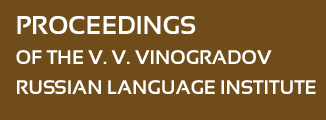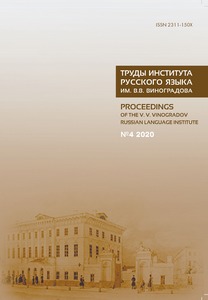INTERACTION OF FUSIONAL AND AGGLUTINATIVE TENDENCIES IN AFFIXAL COMPOSITIONS OF RUSSIAN DERIVED WORD
Abstract:
The competition between agglutination and fusion in Russian word production clearly manifests itself in the models of stringing identical or semantically close affixes. The article considers the interaction of agglutinative and fusional tendencies in Russian word derivation, which takes place throughout the history of the Russian language in affixal compositions of reduplicative type. The models of duplicative and synonymous reduplication of affixes represent an agglutinative mechanism of affixal stringing, but this mechanism operates due to the fusional properties of word-forming affixes in Rus sian: their polysemy, irregularity, and propensity to de-ethymologization. Repeated affixation is aimed at eliminating the polysemy of the primary affix and reconstructing de-ethymologized meanings; it contributes to the restoration of semantic distinctness of the affix, creates the possibility of dissected perception of information, brings the fusional word-formant closer to the formant of agglutinative type. This general purpose of repeated duplicative or synonymous affixal stringing develops in a peculiar way in different word-formation subsystems (the materials of the article show the causes and consequences of affixal stringing of reduplicative type in diff erent semantic-gramma tical groups of words). The agglutinative stringing of affixes comes into conflict with the structural foundations of the inflectional language; affixal sequences are processed as fusional in the structure of the Russian polymorphemic word; the process of aggluti native stringing of isosemic affixes degenerates in the fusional language into secondary synthesized new derivational formants.


